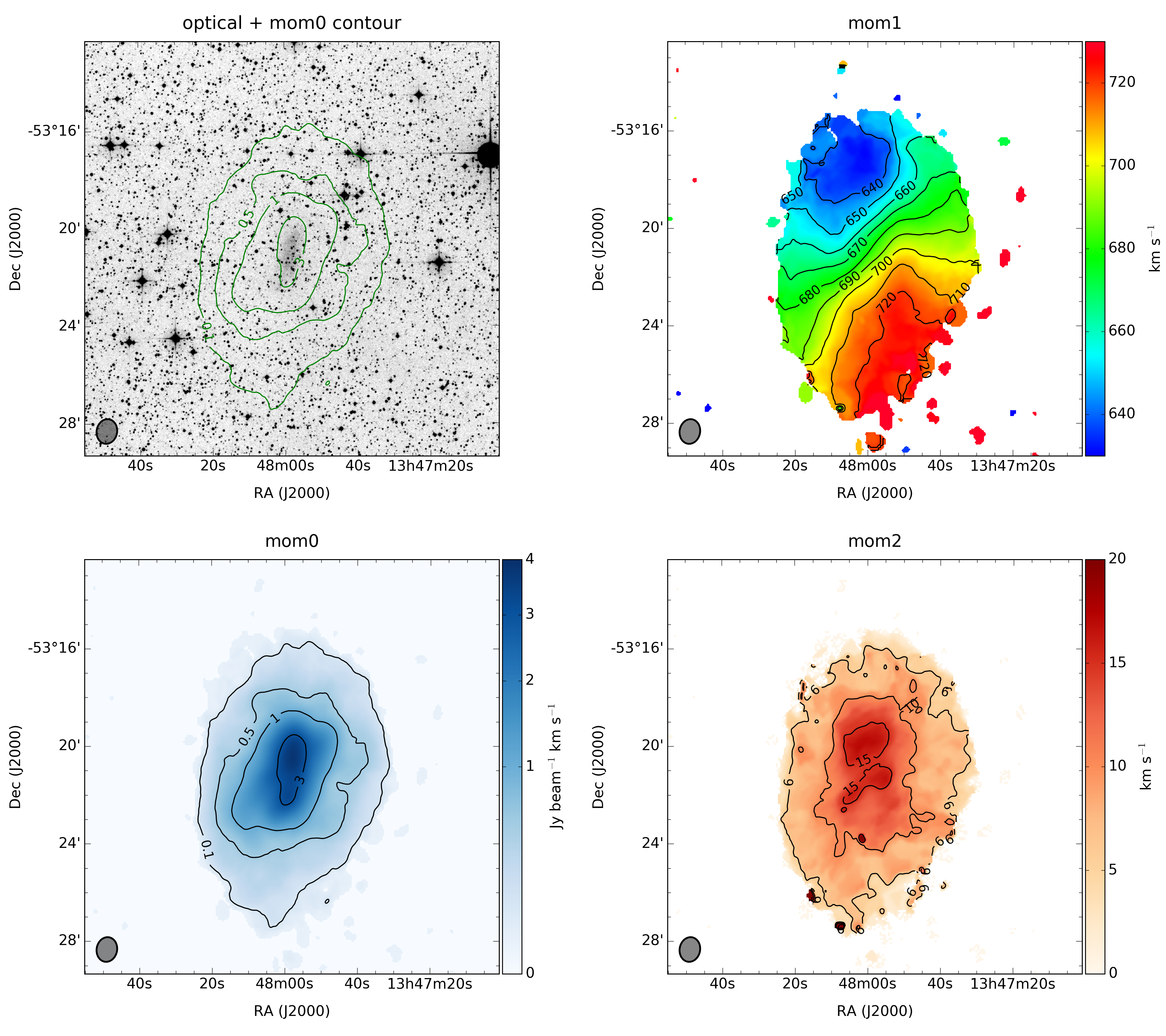ESO 174-G?001

ESO 174-G?001
(HIPASS J1348-53) is very low surface brightness galaxy at a
Tully-Fisher (TF) distance of 3.6 Mpc. This is much lower than the Hubble
distance of 6.2 Mpc derived from the HIPASS vLG of 466 km/s
(Koribalski et al. 2004). ESO 174-G?001 − not be confused with the
more distant spiral galaxy ESO 174-G001 − appears to be rather
isolated with the nearest neighbours being NGC 5206, a gas-poor lenticular
galaxy, and NGC 4945 (HIPASS J1305-49), a gas-rich starburst galaxy, both
more than 5 degrees away. ESO 174-G?001's stellar disc is highly obscured
by foreground stars due to its low Galactic latitude of 8.6 degr. The galaxy
was not detected in deep H-band observations by Kirby et al. (2008b).
Our ATCA HI moment maps show a very extended HI disc, ~3 times larger than the
stellar disc, and a clear rotation pattern (see also Koribalski 2015, 2017).
We find the kinematic major axis of ESO 174-G?001 (PA = 218 degr) differs
significantly from the morphological major axis (PA ~ 165 degr) both of the
stellar and the inner HI disc. Kirby et al. (2012) discuss these misalignments
and employ tilted-ring fitting to show that the position angle decreases with
radius from 233 degr to 202 degr. Their rotation curve, which appears to
flatten reaching Rmax = 360 arcsec (6.3 kpc), shows vrot
= 66 km/s for i = 40 degr.
Using 3D FAT Kamphuis et al. (2015) obtain a much higher
rotational velocity (vrot = 97.3 km/s) assuming i = 22.7 degr and
PA = 218.4 degr. Neither model fits the observed kinematics well. Similar
misalignments are found in NGC 625 (Cote et al. 2000; Cannon et al. 2004),
IC 4662 (van Eymeren et al. 2010) and GR8 (Begum & Chengalur 2003), who
discuss infall/outflow, polar rings and minor mergers. The X-shaped HI
distribution in the inner region of ESO 174-G?001 provides further clues as
to the nature of its peculiar gas kinematics. Using our ATCA HI data we
measure FHI = 52.6 Jy km/s, in agreement with HIPASS (Koribalski
et al. 2004), and derive MHI = 1.6 × 108
M☉. A 20-cm radio continuum source (~7 mJy) is
detected just offset from the galaxy centre (Shao et al. 2017).
Reference:
Koribalski et al. 2018
* LVHIS database
* LVHIS homepage
* next